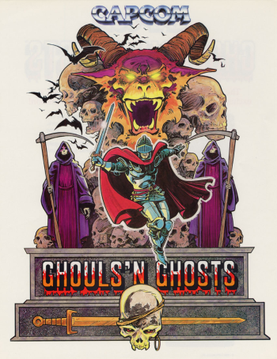
Ghouls 'n Ghosts, known as Dai Makaimura in Japan, is a side-scrolling platform game developed by Capcom, released as an arcade video game in 1988 and ported to home platforms. It is the sequel to Ghosts 'n Goblins and the second game in the Ghosts 'n Goblins series.

Columns is a match-three puzzle video game released by Jay Geertsen in 1989. Designed for the 68000-based HP 9000 running HP-UX, it was ported to Mac and DOS before being released commercially by Sega who ported it to arcades and then to several Sega consoles. The game was subsequently ported to other home computer platforms, including the Atari ST.

Street Fighter II: The World Warrior is a 2D fighting game developed by Capcom and originally released for arcades in 1991. It is the second installment in the Street Fighter series and the sequel to 1987's Street Fighter. It is Capcom's fourteenth game to use the CP System arcade system board. Street Fighter II vastly improved many of the concepts introduced in the first game, including the use of special command-based moves, a combo system, a six-button configuration, and a wider selection of playable characters, each with a unique fighting style.
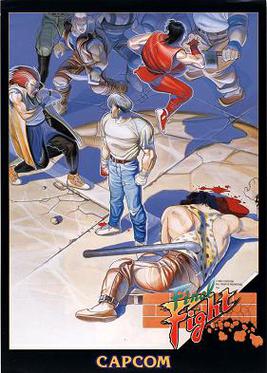
Final Fight is a side-scrolling beat-'em-up video game produced by Capcom. Originally released as an arcade game in 1989, it was the seventh title released for the CP System hardware. Set in the fictional Metro City, the game lets the player control one of three street fighters: former pro wrestler and city mayor Mike Haggar, expert brawler Cody Travers, and modern-day ninja Guy. The trio set out to rescue Jessica when she is kidnapped by the Mad Gear Gang.
In the history of video games, the fourth generation of video game consoles, more commonly referred to as the 16-bit era, began on October 30, 1987, with the Japanese release of NEC Home Electronics' PC Engine. Though NEC released the first console of this era, sales were mostly dominated by the rivalry between Sega and Nintendo across most markets: the Sega Mega Drive and the Super Nintendo. Cartridge-based handheld game consoles became prominent during this time, such as the Nintendo Game Boy, Atari Lynx, Sega Game Gear and TurboExpress.
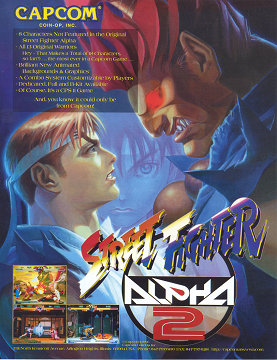
Street Fighter Alpha 2, known as Street Fighter Zero 2 in Japan, Asia, South America, and Oceania, is a 1996 fighting game originally released for the CPS II arcade hardware by Capcom. The game is a remake to the previous year's Street Fighter Alpha: Warriors' Dreams. The game features a number of improvements over the original, such as new attacks, stages, endings, and gameplay features. It was followed by Street Fighter Alpha 3.
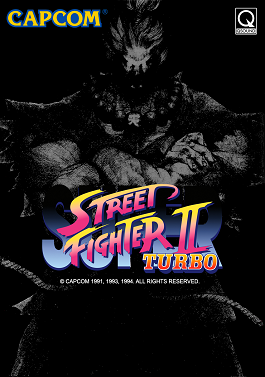
Super Street Fighter II Turbo is a fighting game released for the arcades by Capcom in Japan on February 23, 1994, in North America on February 23 and March 26, 1994 (beta) and in Europe in March 1994 (beta). It is the fifth installment in the Street Fighter II sub-series of Street Fighter games, following Super Street Fighter II: The New Challengers. Like its predecessor, it ran on the CP System II hardware.
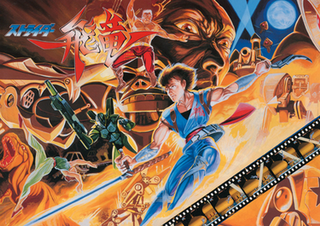
Strider, released in Japan as Strider Hiryū, is a hack-and-slash platform game released in arcades in 1989 by Capcom. Set in a dystopian future where Earth is ruled by the tyrannical Grandmaster Meio, it follows the titular Strider named Hiryu as he attempts to end his tyrannical reign for good. The game resulted from cooperation between Capcom and manga publisher Moto Kikaku. It marked the video game debut of Strider Hiryu, after the character was introduced in the 1988 manga Strider Hiryu.
1993 saw many sequels and prequels in video games, such as Dragon Ball Z: Super Butōden, Mortal Kombat II, Secret of Mana, and Super Street Fighter II, alongside new titles such as Star Fox, FIFA International Soccer, Doom, Gunstar Heroes, Myst, Samurai Shodown, Ridge Racer, NBA Jam, Disney's Aladdin, and Virtua Fighter.
1992 saw many sequels and prequels in video games, such as Dragon Quest V, Final Fantasy V, Sonic the Hedgehog 2, Street Fighter II: Champion Edition, Super Mario Land 2: 6 Golden Coins, and Super Mario Kart, along with new titles such as Art of Fighting, Lethal Enforcers, Mortal Kombat and Virtua Racing.
1991 saw many sequels and prequels in video games, such as Street Fighter II, Final Fantasy IV, Super Castlevania IV, Mega Man 4, Super Ghouls 'n Ghosts, and The Legend of Zelda: A Link to the Past, along with new titles such as Sonic the Hedgehog, Battletoads, Lemmings, Sunset Riders, Duke Nukem, Fatal Fury: King of Fighters, and Streets of Rage. The year's highest-grossing video game worldwide was Capcom's arcade fighting game Street Fighter II. The year's best-selling system was the Game Boy for the second year in a row, while the year's best-selling home video game was Sega's Sonic the Hedgehog, which was also the year's top video game rental in the United States.

Fatal Fury 2, known as Garō Densetsu 2: Aratanaru Tatakai in Japan, is a 1992 fighting video game released by SNK for the Neo Geo arcade and home platforms, and later ported to several other home systems. It is the sequel to Fatal Fury: King of Fighters (1991) and the second game in the Fatal Fury franchise. Its updated version, Fatal Fury Special, was released in 1993.
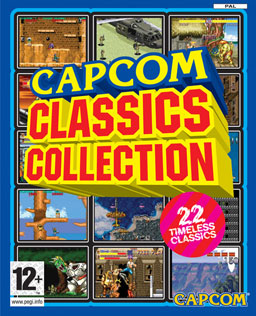
Capcom Classics Collection is a compilation of arcade games released by Capcom for the PlayStation 2 and Xbox on September 27, 2005 in North America and in 2006 in Japan. It was developed by Digital Eclipse Software, Sensory Sweep, and its Japanese developer Klein Computer Entertainment. A second volume, Capcom Classics Collection Vol. 2, was released on November 24, 2006 in North America, for PlayStation 2 and Xbox. The second volume as well as the Xbox version of the first volume were not released in Japan.

Street Fighter II Turbo: Hyper Fighting is a competitive fighting game released by Capcom for arcades in 1992. It is the third arcade version of Street Fighter II, part of the Street Fighter franchise, following Street Fighter II: Champion Edition, and was initially released as an enhancement kit for that game. Released less than a year after the previous installment, Turbo introduced a faster playing speed and new special moves for certain characters, as well as further refinement to the character balance.
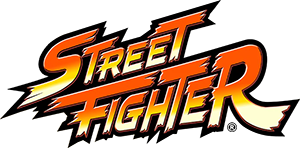
Street Fighter is a Japanese media franchise centered on a series of fighting games developed and published by Capcom. The first game in the series was released in 1987, followed by six other main series games, various spin-offs and crossovers, and numerous appearances in other media. Its best-selling 1991 release Street Fighter II established many of the conventions of the one-on-one fighting genre.

Samurai Shodown, known in Japan as Samurai Spirits, is a fighting game developed and published by SNK for the Neo Geo arcade and home platform. Released in 1993, it is the first installment in the Samurai Shodown series. In contrast to other fighting games at the time, which were set in modern times and focused primarily on hand-to-hand combat, Samurai Shodown is set in feudal-era Japan and was SNK's first arcade fighting game to focus primarily on weapon-based combat.
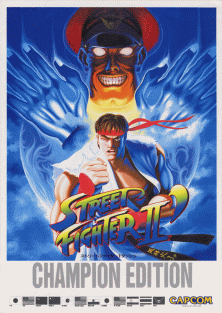
Street Fighter II: Champion Edition, released as Street Fighter II Dash in Japan, is a fighting game released by Capcom in 1992. It was launched for arcades and converted to several video game consoles. It is the first of several updated versions of Street Fighter II, and part of the Street Fighter series. The main changes are the addition of the four grand masters as playable characters and mirror matches. The fighting techniques of the eight main characters from the original game were further balanced for competitive play.

Captain Commando is a 1991 futuristic side-scrolling beat 'em up originally developed and published by Capcom as an arcade video game, and later ported to several other platforms. It was the seventeenth game produced for the company's CP System hardware. The game stars the titular superhero who was originally conceived as a fictional spokesman used by Capcom USA in the company's console games during the late 1980s. On September 13, 2018, Capcom announced Capcom Beat 'Em Up Bundle with Captain Commando being one of seven titles and released digitally for Nintendo Switch, PlayStation 4, Xbox One, and Windows on September 18, 2018.
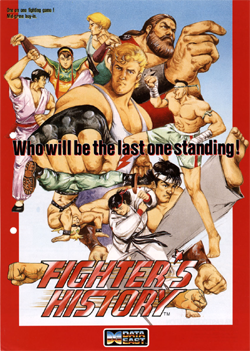
Fighter's History is a 1993 arcade fighting game developed and published by Data East. It's the inaugural game in the Fighter's History series. The main unique feature of the Fighter's History is its weak point system, which allows the player to temporarily stun an opponent by repeatedly hitting their weak point.

















